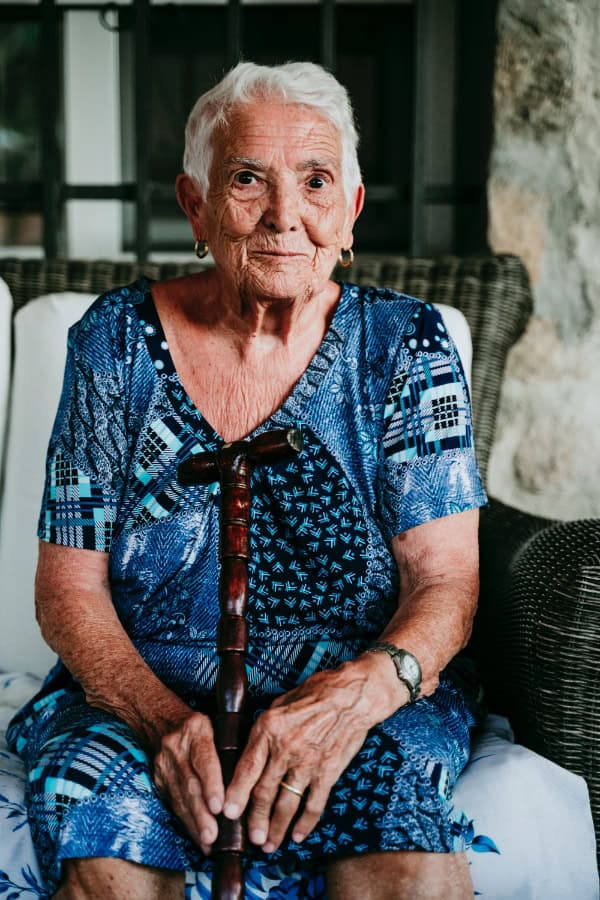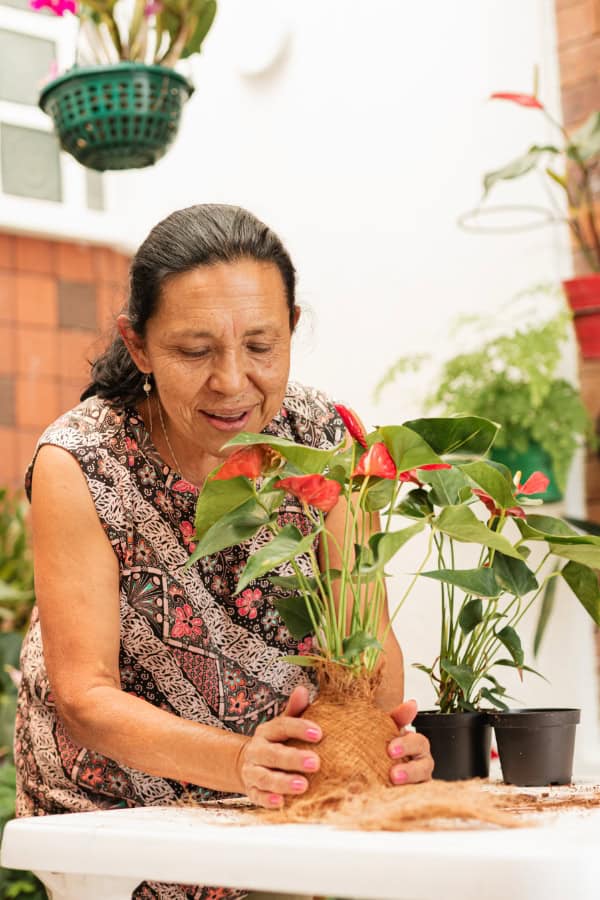Hospice Care at Home
Care Services
Hospice care at home brings expert medical and emotional support directly to patients, allowing them to spend their final days…















For most families facing a terminal diagnosis, there’s no place more comforting than home. Hospice care at home allows your loved one to remain in familiar surroundings, surrounded by the people and memories that matter most, while receiving professional medical care focused on comfort and dignity. This approach to end-of-life care honors your family’s wishes while ensuring that expert support is available whenever you need it.
At Serenity Palliative & Hospice Care, we believe that home truly is where the heart is. Our experienced team is dedicated to helping families navigate this journey with compassion, providing the medical expertise and emotional support needed to keep your loved one comfortable at home. This guide will help you understand what hospice care at home involves, when it’s appropriate, and how it can provide peace of mind for your entire family during this precious time together.
What is Hospice Care At Home?
Hospice care at home is a comprehensive approach to end-of-life care that brings professional medical services, emotional support, and spiritual guidance directly to your loved one’s home. Rather than requiring a move to a facility, this model of care allows patients to remain in their most comfortable and familiar environment while receiving expert care tailored to their specific needs.
A Team-Based Approach: Home hospice care involves a dedicated team of professionals including physicians, nurses, social workers, chaplains, and trained volunteers who work together to address not just physical symptoms but also emotional, spiritual, and practical needs. This team comes to your home on a regular schedule and is available 24/7 for emergencies or urgent concerns.
Comfort-Focused Care: Unlike traditional medical care that focuses on curing disease, hospice care at home prioritizes comfort, pain management, and quality of life. The goal is to ensure your loved one can spend their remaining time as comfortably and meaningfully as possible, surrounded by family and friends.
Family-Centered Support: Home hospice care recognizes that the entire family is affected by a terminal diagnosis. The team provides education, emotional support, and practical assistance to help family members feel confident in their caregiving role while also taking care of their own needs.
Individualized Care Plans: Every home hospice care plan is tailored to the specific needs, preferences, and values of your loved one and family. This personalized approach ensures that care aligns with your family’s wishes and cultural or religious beliefs.
Maintaining Independence: Home hospice care allows your loved one to maintain as much independence and control over their daily routine as possible. They can wake up in their own bed, eat favorite foods, spend time with beloved pets, and continue cherished routines in a familiar environment.
The Benefits of Hospice Care at Home
Choosing hospice care at home offers numerous advantages that can significantly improve quality of life for both patients and families during this challenging time.
Familiar Environment: There’s immeasurable comfort in being surrounded by familiar sights, sounds, and smells. Your loved one can remain in the environment where they feel most secure and relaxed, surrounded by personal belongings, family photos, and cherished memories.
Family Togetherness: Home hospice care makes it easier for family members to spend quality time together. Children and grandchildren can visit more naturally, family meals can continue, and daily routines can be maintained as much as possible. This togetherness often creates opportunities for meaningful conversations and memory-making.
Personalized Care: In a home setting, care can be truly individualized. Your loved one can maintain their preferred daily routine, eat favorite foods, and receive care in ways that feel most comfortable and dignified to them.
Enhanced Quality of Life: Studies consistently show that patients receiving hospice care at home often experience better quality of life, with improved pain management, less anxiety, and greater satisfaction with their care compared to those in institutional settings.
Cost-Effective Care: Home hospice care is typically more cost-effective than facility-based care, with most expenses covered by Medicare, Medicaid, or private insurance. This can provide peace of mind for families concerned about the financial impact of end-of-life care.
Reduced Hospital Visits: With professional nursing care available at home and 24/7 support, families often find they can avoid unnecessary trips to the emergency room or hospital, reducing stress and maintaining comfort.
Caregiver Support: Family members receive extensive education and support, helping them feel more confident in their caregiving role. This support can reduce anxiety and help families feel more prepared for what lies ahead.
Types of Hospice and Palliative Care
Understanding the different types of hospice and palliative care available can help you make informed decisions about the best approach for your loved one’s situation.
Palliative Care: Palliative care focuses on comfort and quality of life for people with serious illnesses but can be provided alongside curative treatments. It’s appropriate at any stage of a serious illness and can help manage symptoms, reduce stress, and improve quality of life for both patients and families.
Hospice Care: Hospice care is specifically for individuals with a terminal diagnosis and a life expectancy of six months or less if the disease follows its expected course. Hospice care focuses entirely on comfort rather than cure and provides comprehensive support for both patients and families.
Routine Home Care: This is the most common type of hospice care, where services are provided in the patient’s home with regular visits from the hospice team. Family members provide much of the day-to-day care with professional support and guidance.
Continuous Home Care: This intensive level of care provides nursing support in the home for 8-24 hours during periods of crisis when symptoms are difficult to manage. It’s designed to help patients remain at home during acute episodes.
Respite Care: This temporary care (up to five days) is provided in a facility to give family caregivers a break. It allows family members to rest, handle other responsibilities, or simply recharge emotionally.
General Inpatient Care: When symptoms become too complex to manage at home, patients may need temporary inpatient care in a hospice facility or hospital until symptoms are stabilized.
Accessing Palliative Care and Hospice Care at Home
Getting started with home hospice care involves several steps, but the process is designed to be as simple and supportive as possible during an already difficult time.
Physician Referral: The process typically begins with a referral from your loved one’s physician, though families can also contact hospice organizations directly. The referring physician will provide medical information and confirm that hospice care is appropriate.
Initial Assessment: A hospice nurse or social worker will visit your home to conduct a comprehensive assessment of your loved one’s medical condition, symptoms, and care needs. This assessment also includes discussing your family’s goals, concerns, and preferences for care.
Eligibility Determination: The hospice medical director will review the assessment and medical records to determine if your loved one meets the criteria for hospice care. This includes having a terminal diagnosis with a life expectancy of six months or less if the disease follows its expected course.
Insurance Verification: The hospice team will verify insurance coverage and handle all necessary paperwork to ensure services are covered. Most hospice care is covered by Medicare, Medicaid, and private insurance plans.
Care Plan Development: Once eligibility is confirmed, the hospice team will work with your family to develop a comprehensive care plan that addresses medical needs, comfort goals, and family preferences. This plan is regularly reviewed and updated as needs change.
Service Initiation: Hospice services typically begin within 24-48 hours of approval, with an initial visit to set up equipment, provide medications, and begin implementing the care plan. The team will also provide education and support to help family members feel confident in their caregiving role.
When Is Hospice Routine Home Care Needed?
Hospice routine home care is appropriate when your loved one has a terminal diagnosis but their symptoms can be managed effectively with regular professional visits and family caregiving support.
Stable Symptom Management: When pain, nausea, breathing difficulties, or other symptoms are manageable with medications and interventions that can be provided at home, routine home care is often the most appropriate level of hospice care.
Family Caregiver Availability: Routine home care works best when family members are available to provide basic care and support between professional visits. This doesn’t mean families need medical expertise – the hospice team provides all necessary training and support.
Safe Home Environment: The home should be safe and suitable for providing care, with adequate space for medical equipment if needed and accessibility for hospice team members to visit regularly.
Patient Preference: Many patients strongly prefer to remain at home, and routine home care honors this preference while ensuring professional medical support is available when needed.
Family Readiness: Families should feel comfortable with the responsibilities of home caregiving, though the hospice team provides extensive education and support to help families feel prepared and confident.
Symptom Stability: Routine home care is most appropriate when symptoms are relatively stable and predictable, allowing for scheduled visits and planned care interventions.
What are the Four Levels of Hospice Care?
Hospice care is organized into four distinct levels, each designed to meet different needs and circumstances that may arise during the course of care.
Routine Home Care: This is the most common level of hospice care, accounting for about 95% of hospice days. Services are provided in the patient’s home with regular visits from nurses, social workers, chaplains, and other team members. Family members provide much of the day-to-day care with professional support and guidance.
Continuous Home Care: This level provides intensive nursing care in the home during periods of crisis, typically for 8-24 hours. It’s designed to help manage acute symptoms at home when possible, avoiding the need for hospitalization or facility placement.
Inpatient Respite Care: This temporary care (up to five consecutive days) is provided in a hospice facility, hospital, or skilled nursing facility to give family caregivers a break. It allows family members to rest, handle other responsibilities, or address their own health needs.
General Inpatient Care: This level provides intensive inpatient care in a hospice facility or hospital for symptom management that cannot be provided in other settings. It’s typically used when symptoms are too complex or severe to manage at home, even with continuous care.
Patients can move between these levels of care as their needs change, with the goal always being to provide the most appropriate level of care while honoring patient and family preferences whenever possible.
What Illnesses Qualify for Hospice Care?
Hospice care is available for individuals with various terminal illnesses, with eligibility based on prognosis rather than specific diagnoses.
Cancer: All types of cancer may qualify for hospice care when curative treatments are no longer effective or desired, and the prognosis is six months or less. This includes situations where patients choose to stop aggressive treatments and focus on comfort care.
Heart Disease: End-stage heart disease, including congestive heart failure, can qualify for hospice care when symptoms are severe and life expectancy is limited despite optimal medical management.
Lung Disease: Chronic obstructive pulmonary disease (COPD), pulmonary fibrosis, and other end-stage lung conditions may qualify when breathing becomes severely compromised and quality of life is significantly impacted.
Kidney Disease: End-stage renal disease qualifies for hospice care when patients choose to stop dialysis or when dialysis is no longer effective in maintaining quality of life.
Liver Disease: End-stage liver disease, including cirrhosis and liver failure, can qualify for hospice care when liver function is severely compromised and prognosis is limited.
Neurological Conditions: Progressive neurological diseases such as ALS (Lou Gehrig’s disease), Alzheimer’s disease, Parkinson’s disease, and multiple sclerosis may qualify when they reach advanced stages.
Stroke: Severe strokes that result in significant disability and limited life expectancy may qualify for hospice care, particularly when recovery is unlikely.
Other Conditions: Many other conditions may qualify for hospice care, including advanced HIV/AIDS, severe diabetes complications, and various rare diseases, as long as the prognosis meets hospice criteria.
What Does Hospice Care Include?
Home hospice care provides comprehensive services designed to address all aspects of comfort and support during end-of-life care.
Medical Services: Regular visits from skilled nurses who monitor symptoms, administer medications, and provide medical care related to the terminal diagnosis. A hospice physician oversees the medical care and is available for consultation as needed.
Medications and Supplies: All medications related to the terminal diagnosis and symptom management are provided, including pain medications, anti-nausea drugs, and other comfort medications. Medical supplies and equipment such as hospital beds, wheelchairs, and oxygen equipment are also provided as needed.
Personal Care Services: Home health aides assist with bathing, dressing, grooming, and other personal care needs. These services help maintain dignity and comfort while providing relief for family caregivers.
Social Work Services: Medical social workers provide counseling and support for both patients and families, helping with emotional adjustment, family communication, and practical matters such as advance directives and funeral planning.
Spiritual Care: Chaplains or spiritual counselors provide spiritual support that honors the patient’s and family’s religious or spiritual beliefs. This care is offered regardless of specific faith traditions or beliefs.
Bereavement Support: Grief counseling and support services are provided to family members for up to one year after the patient’s death, helping families cope with their loss and adjust to life without their loved one.
Volunteer Services: Trained volunteers provide companionship, practical assistance, and emotional support to both patients and families. Volunteers can help with tasks like reading, light housework, or simply providing a friendly presence.
24/7 Support: A nurse is available by phone 24 hours a day, seven days a week, to provide guidance, answer questions, and arrange for urgent visits when needed.
When Should You Consider Hospice Care?
Deciding when to consider hospice care can be challenging, but there are several indicators that suggest it may be time to explore this option.
Frequent Hospitalizations: If your loved one is experiencing frequent trips to the hospital or emergency room, hospice care may help provide better symptom management at home and reduce the need for these stressful hospitalizations.
Declining Functional Status: When your loved one is spending increasing amounts of time in bed, has difficulty with basic activities like bathing or eating, or is becoming more dependent on others for care, hospice may be appropriate.
Uncontrolled Symptoms: If pain, nausea, shortness of breath, or other symptoms are difficult to control or are significantly impacting quality of life, hospice care’s focus on comfort may be beneficial.
Weight Loss and Decreased Appetite: Significant weight loss and loss of appetite are often indicators that the body is declining and that comfort care may be more appropriate than aggressive medical interventions.
Increased Confusion or Cognitive Changes: Progressive confusion, difficulty recognizing family members, or other cognitive changes may indicate that the disease is advancing and that hospice care should be considered.
Physician Recommendation: If your loved one’s physician suggests that curative treatments are no longer effective or that the focus should shift to comfort care, it may be time to consider hospice services.
Patient or Family Desire: Sometimes patients or families simply express a desire to stop aggressive treatments and focus on comfort and quality of life. This is a valid reason to consider hospice care, even if other indicators aren’t present.
Hospice Home Care Eligibility
Understanding the specific eligibility requirements for hospice home care can help families make informed decisions about when to pursue these services.
Terminal Diagnosis: Your loved one must have a terminal illness with a life expectancy of six months or less if the disease follows its expected course. This prognosis must be certified by a physician.
Physician Certification: Two physicians – typically your loved one’s attending physician and the hospice medical director – must certify that the prognosis is terminal and that hospice care is appropriate.
Comfort Care Focus: Your loved one must be willing to forgo curative treatments and focus on comfort care instead. This doesn’t mean giving up all medical care, but rather shifting the focus from cure to comfort.
Informed Consent: Your loved one (or their healthcare proxy) must provide informed consent for hospice care, understanding what services will be provided and what the goals of care will be.
Insurance Coverage: Most hospice care is covered by Medicare Part A, Medicaid, and private insurance. The hospice organization will verify coverage and handle insurance matters.
Suitable Home Environment: The home must be safe and suitable for providing care, with adequate space for any necessary equipment and accessibility for hospice team members.
Family Support: While not a strict requirement, having family members or other caregivers available to provide basic care and support between professional visits is important for successful home hospice care.
Ongoing Assessment: Eligibility is reassessed regularly, and if your loved one’s condition improves or stabilizes beyond the six-month prognosis, hospice care can continue as long as the terminal diagnosis remains appropriate.
It’s important to remember that hospice eligibility is not about giving up hope but rather about choosing the most appropriate type of care for your loved one’s current situation. Many patients live longer than initially expected while receiving hospice care, and the focus on comfort and quality of life often contributes to this improved experience.
At Serenity Palliative & Hospice Care, we’re honored to help families navigate this important decision with compassion and expertise. Our experienced team is available to discuss your loved one’s situation, answer questions about hospice care at home, and provide the support you need to make informed decisions about care options. If you’re considering hospice care for your loved one, please don’t hesitate to contact us for a consultation. We’re here to help you provide the comfort and dignity your loved one deserves in the familiar surroundings of home.